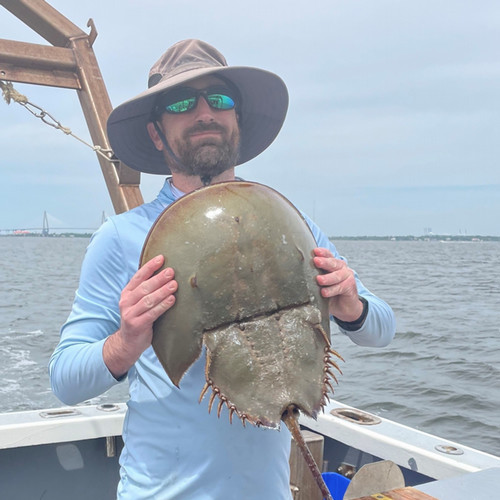
Daniel Sasson
Assistant Marine Scientist - SCDNR
Education
Ph.D., 2015, University of Florida
B.S., 2001, University of North Carolina at Chapel Hill
Research Interests
- Evolution
- Behavior
- Reproductive ecology
- Sexual selection
- Invertebrates
Publications
- Sasson, D., C. Chabot, J. Mattei, J. Brunson, F. Hall,, J. Huber, J.-M. Kasinak, C. McShane, P. Puckette, G. Sundin, P.R. Kingsley-Smith, & M.R. Kendrick. The American horseshoe crab, Limulus polyphemus, spawns extensively in salt marshes. Frontiers in Ecology and the Environment. https://doi.org/10.1002/fee.2738.
- Sasson, D., Allen, J., Walker, M., Huber, H., Rothman, G., Kingsley-Smith, P., Darden, T., Kendrick, M. Prevalence of white spot syndrome virus (WSSV) in wild-caught and commodity decapod crustaceans in coastal South Carolina, USA. Journal of Crustacean Biology, 44. https://doi.org/10.1093/jcbiol/ruae002.
- Scott, E., Kendrick, M., Kingsley-Smith, P., James, M., Lemeris, J., Weeks, E., Sasson, D., Using Public Sightings to Document the Widespread Distribution of the Non-Endemic Blue Land Crab, Cardisoma guanhumi, in South Carolina. Southeastern Naturalist, 22: 498 – 503.
- Fowler-Finn, K., Ahuja, S.*, Hercules, J.*, Jocson, D., Miller, E.*, & Sasson, D. Variation in thermal courtship activity curves is greater across individuals than across populations, and repeatability is greater in females than males in Enchenopa binotata treehoppers (Hemiptera: Membracidae). Journal of evolutionary Biology (in revision).
- Sasson, D., Agali U.*, Brouk R.*, Hercules J.*, Kilmer J., Macchiano A., Ola-Ajose A.*, Fowler-Finn K. 2022 The potential for the evolution of thermally sensitive courtship activity in the treehopper, Enchenopa binotata. Journal of Evolutionary Biology.
- Kendrick, M.R., Brunson, J.F., Sasson, D.A., Hamilton, K.L., Gooding, E.S., Pound*, S.L., & Kingsley-Smith, P.R. 2021 Assessing the viability of American horseshoe crab (Limulus polyphemus) embryos in salt marsh and sandy beach habitats. The Biological Bulletin, 240: 145 - 156